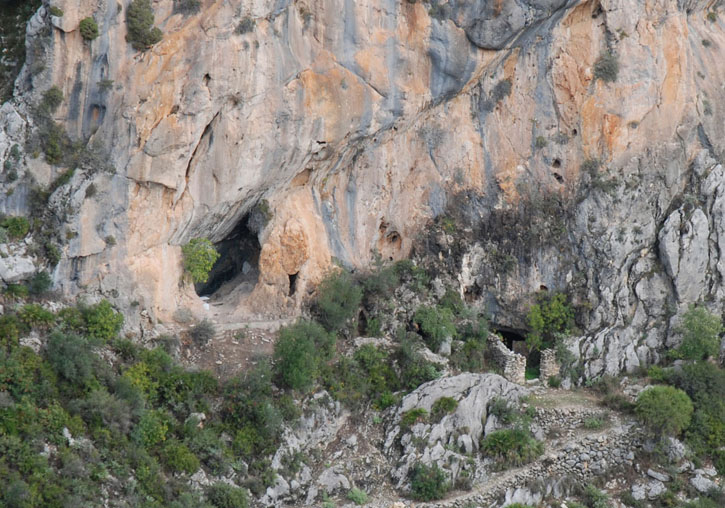The obtaining of iron oxide and its transformation into ochre and colorants between the final Paleolithic and the Neolithic described
- Scientific Culture and Innovation Unit
- September 28th, 2020

A research team from the University of Valencia (UV) and the University of Applied Arts and Sciences of the South of Switzerland has published a study that characterises the supply and processing of iron oxides to obtain ochre and colorants between the end of the Paleolithic and the Neolithic. It is the first time that the ochre recovered in domestic spaces and samples of its geological environment has been investigated, to know its origin.
The work, published in the Geoarchaeology journal, constitutes the discovery of the first known data on the process of capturing mineral oxides, their physical transformation and the tools that intervened throughout the final Paleolithic, Mesolithic and Neolithic, between 15,000 and 6,000 years ago.
“Among the conclusions, we have begun to know how the origin and supply of oxides is managed, we also verify an important processing activity in the most recent phases of the deposit (the Santa Maira Caves in Castell de Castells, Alicante), during the Mesolithic and Neolithic, regarding the first phases, as well as changes when treating oxides and obtaining ochre”, highlighted J. Emili Aura, professor of Prehistory at the UV.
The intense transformation activity has been detected both by the presence of ochre remains of different sizes and weights, as well as by the concentration of stone macro-tools to crush and grind the oxides.
In long human history, the use of iron oxides is considered significant evidence for the recognition of human cognitive abilities, symbolism and language. Ochres and other colorants were used in prehistoric art to capture figurative and geometric motifs, for skin protection and as body painting. They were also used in combination with natural adhesives to handle stone tools, in the tanning process and in the conservation of leather.
Until this study, work on mineral oxides in the Mediterranean region has dealt with the dyes used in prehistoric art. However, there was no study based on archaeological and geological samples with geochemical and mineralogical analysis. This fact has made it possible to know that the existence of nearby geological materials was relevant in the oxide supply work.
In addition to linking archaeological ochre with the environment, it has been possible to know the changes in the use of ochre throughout the different archaeological phases, and to compare its origin (local / non-local) and the processing equipment throughout of several millennia.
The research team is made up by J. Emili Aura Tortosa (UV), Gianni Gallello (UV), Clodoaldo Roldán (UV), Giovanni Cavallo (University of Applied Arts and Sciences of Southern Switzerland), Agustín Pastor (UV) and Sonia Murcia‐Mascarós (UV). The research has been carried out within a project funded by the Department of Innovation, Universities, Science and Digital Society of the Valencian Government (AICO 2018-125 Project), from the collaboration of the Western Mediterranean Prehistory Group with the unit of multidisciplinary research ArchaeChemis and the Archeometry Unit of the ICMUV.
Santa Maira caves
Santa Maira caves is a site studied by a large interdisciplinary team that has provided relevant data on the paleoenvironmental changes that occurred since the Last Glacial Maximum. Also on technological evolution, economic strategies, mobility and symbolism, and has provided evidence of cannibalism practices among Mesolithic hunters. This same year, the evidence of the use of vegetable fibres to make basketry objects, a perishable material that is only preserved in exceptional conditions, was released.
Article:
J. Emili Aura Tortosa et al. «Characterization and sources of Paleolithic–Mesolithic ochre from Coves de Santa Maira (Valencian Region, Spain)». Geoarchaeology. 2020;1–20. DOI: 10.1002/gea.21821
Photo captions:
Ochre fragments from the geological environment of the Santa Maira Caves.
File in: Investigació a la UV , Institut Universitari de Ciència dels Materials (ICMUV) , Facultat de Geografia i Història , Facultat de Química , Producció científica , Grups de recerca , Finançament recerca , Recerca, innovació i transferència , Difusió i comunicació científica , Internacionalització recerca


















